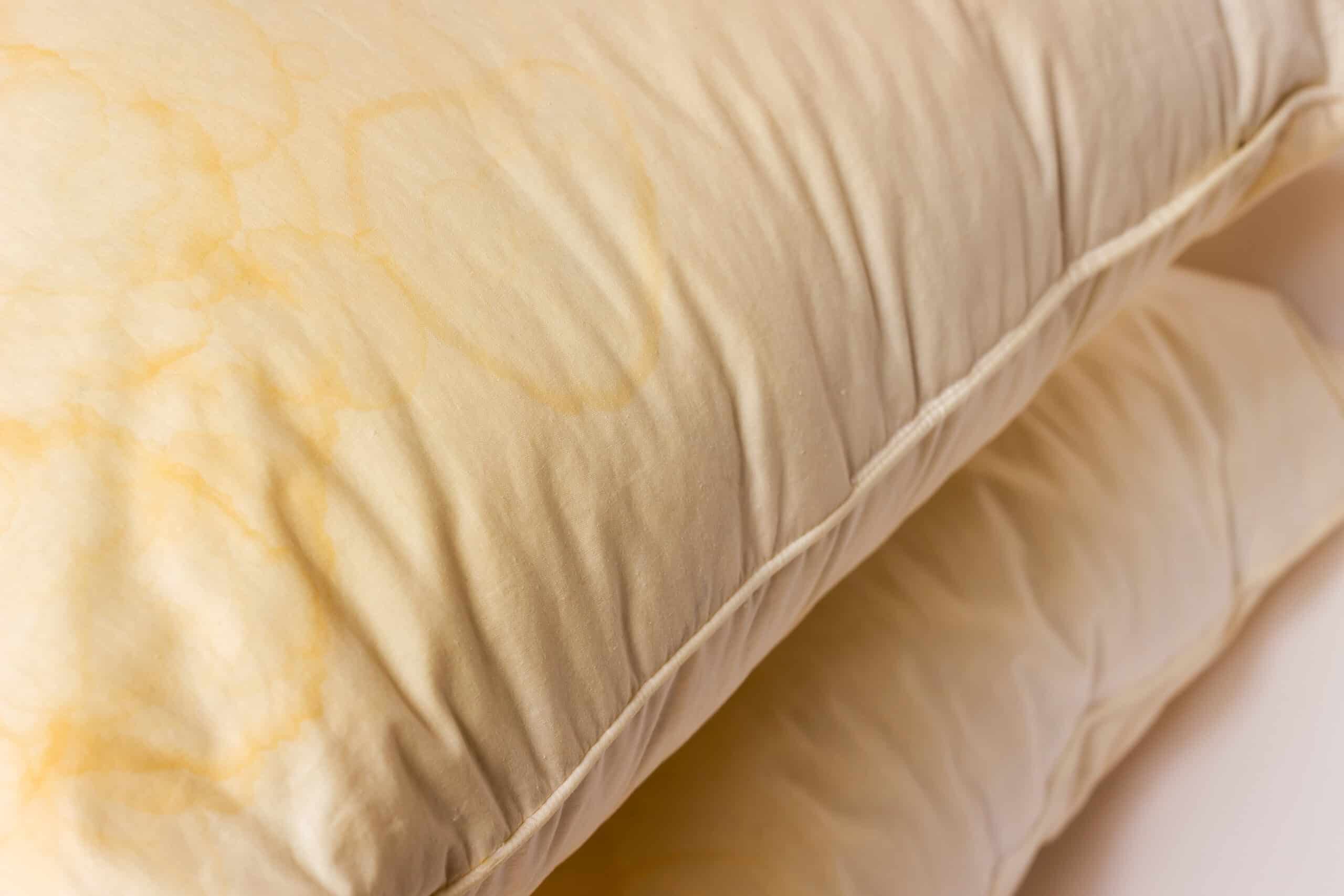You can wash 2 down pillows at a time in the washer to balance the load on a gentle setting, with hot water and a small amount of detergent. Heavy agitation can tear old pillows apart and using too much detergent can saturate them with soap that can be difficult to remove in one rinse cycle.
Memory foam and latex pillows should generally be washed by hand as washing machine agitation and a fast spin cycle can damage them.
Always follow the washing instructions particularly when you’re washing older pillows that might have lost some of its fiber strength.
It also depends on what type of washing machine you have as we’ll discuss below.
How to wash pillows in a top loading washing machine
Be very careful with putting older pillows of any kind in a top loader because the strong agitation on many wash cycles can easily tear apart a weakened pillow.
It depends on the size of the washing machine but you generally want to fit 2 pillows in the machine in order to balance out the load.
Use a hot water setting and don’t use much detergent. Pillows can really soak up water and become waterlogged. With only 2 pillows in the washer, too much detergent can cause too much sudsing and soapy water which can be difficult to remove from the pillow with a single rinse cycle.
Modern top loaders often come without an actual agitator which is generally preferred. An agitator is a tall vertical post that helps to churn the laundry and is the older school washer design.
Machines that don’t have an agitator instead have an impeller which is a small low profile cone. This helps to rub clothes against each other to help clean them which is not as violent as the agitation method.
If you have an agitator model, you can select a gentler setting to slow down the agitation speed.
How to wash pillows in a front loading washing machine
Front loading washing machines are considered to be High Efficiency (HE) even if they don’t have the HE marking since front loading machines use less water and energy and require less detergent. They don’t have an agitator but have a small baffle to help spin the clothes.
Front loaders spin clothes vertically which means the revolutions per minute is generally much higher than a top loader. So a front loader will tend to remove more water from pillows with the faster spinning but could potentially damage the pillows due to the higher revolution speed.
If you’re afraid of this occurring, you can lower the spin cycle speed.
Using an HE detergent is a better choice than a regular detergent because an HE brand is low-sudsing so it won’t foam up as much as regular detergent. This is especially good for pillows which can absorb a great deal of water and thus detergent.
While the lack of agitator will help to protect pillows, be careful with the cycle you choose and select a gentle or slower setting than you might otherwise use.
Speaking from personal experience, I had an older pillow torn apart in an HE machine probably from the high speed spinning so be careful which pillows you choose to put in there.
Again, it depends on the size of the washing machine but you generally want to fit 2 pillows in the machine in order to balance out the load.
How to avoid a lumpy pillow after washing
One of the problems with washing your pillows is the drying part. Often, pillows get lumpy from washing where the filling clumps in one end or the other. How can you prevent this?
Don’t hang a pillow on one end and just leave it to dry. It won’t dry evenly and will tend to clump up as the filling will drop to the lower end. Your best bet is to put the pillow in a dryer if possible.
Depending on how many options your dryer has, you can generally use the following settings to ensure you get dry but non-lumpy pillows:
- Delicate setting
- Low(er) temperature
- Higher dry level
Selecting a delicate setting means the pillow will be better cared for than a regular tumble setting. Using a lower temperature helps to protect the pillow but increasing the dry level ensures the pillow will get dry and ensures the machine won’t turn off before it’s dry.
If you don’t have a dryer and need to air dry, you can hang dry the pillow but you’ll need to turn it and fluff it up every so often as it’s drying. This will prevent clumping.
Final thoughts
Wash pillows 2-4 times per year depending on your situation. The more you sweat the more frequently they will need to be washed. Spot clean stains beforehand and use stain remover if needed.
Washing pillows with hot water can help to remove dust mites and kill bacteria.
You might consider rinsing pillows again after the wash cycle is completed to ensure you have removed all remaining detergent.
Consider using dryer balls which can help to fluff up the pillows and may prevent clumping.


